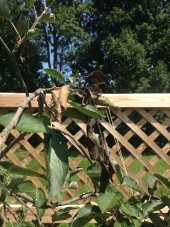
 2
2




 4
4












 1
1








R. Steele wrote:P.S. a five gallon bucket make around 4 gallons of tea, then 4 gallons dilluted 5 to one, means you have over 20 gallons of tea to spray. Just remember once the tea goes off the air, you have a limited time to spray it before the oxygen gets used up in the water and the aerobic biome dies off, less then 45 minuts. So keep the bucket brewing while your spraying each tank, and use it up before it hits 28 hours. If it smells sour, its done, as in not good for foiler feeding. If you don't need that much foiler feed, water the rest into the roots.








 1
1




 1
1





|
mooooooo ..... tiny ad ....
Play Your Way to a Sustainable Lifestyle: Uncover Permaculture Principles with Each Card
https://gardener-gift.com/
|



